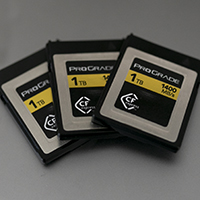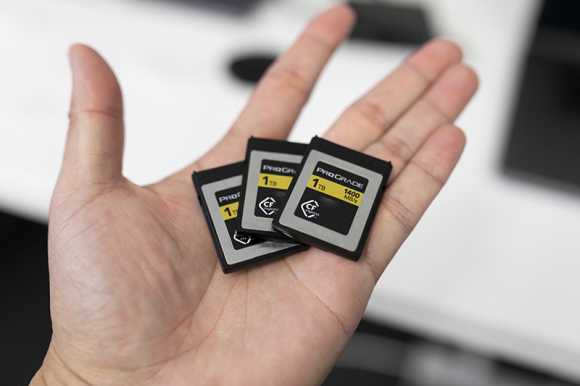EXCLUSIVE REVIEW: ProGrade Digital’s new 1400 MB/s CFexpress card is memory’s brave new world
posted Sunday, April 8, 2018 at 3:59 PM EDT

In early March, Nikon Rumors reported that fledgling memory company ProGrade Digital would not be making XQD cards, instead betting on the new format CFexpress. This rumor was later confirmed by DP Review. For those who are not close to the memory industry, this was somewhat of a shock, as XQD is a format popular with Nikon shooters. Why wouldn't ProGrade want a piece of that? But for those who have seen the future of memory coming for the last couple years, this was all part of the plan.
And that plan has come to fruition, as ProGrade today changed the conversation of what a memory card can and should do.
ProGrade Digital is making history, showcasing the technology behind the very first CFexpress 1.0 memory card: 1 TB capacity capable of an incredible 1400 MB/s.

“The CFexpress standard has been evolving for several years within the CompactFlash Association as a successor to both CFast and XQD formats. We are pleased to be working within the CFA and alongside device manufacturers to bring to market this next generation removable storage standard,” said Wes Brewer, CEO of ProGrade Digital. “Industry adoption of CFexpress will allow for much higher resolution and higher bit rate image capture than ever before in many still image and video capture devices. Faster offload speeds will also greatly benefit the post-capture workflow through the extremely high read speeds it provides.”
ProGrade has benchmarked their new CFexpress card to hit greater than 1400 MB/s read speeds and over a 1000 BMB/s burst write speeds. This would be over well over double current speeds found on the highest-end CFast cards, matching speeds found on computer SSDs. On a memory card. That fits in the center of the palm of your hand. That has the same form factor as XQD.
It seems unbelievable. This is a memory card, and it's outpacing just about everything we've seen.

The team at ProGrade invited us to their office for an exclusive test the technology with our own computer to verify that those numbers, which seem incredibly high.
But not only did this card hit their spec, it exceeded them.
This test was performed on a MacBook Pro with TouchBar, via ProGrade Digital's beta XQD/CFexpress card reader and a Thunderbolt 3 cable.

With 1044.5 MB/s write and 1437.9 MB/s read speeds, this new technology is going to completely change the memory industry. With so much capability in such a small card, not to mention the massive capacity of 1 TB (ProGrade said that when they release this card later this year, they will also offer lower capacities of 256GB and 512GB), the options for camera companies explodes beyond current limits. 6K video internal? 8K video internal? Both of those in RAW? More? What about 50 or 60 still photos a second for sports? 80? 100? The numbers add up if you look at what can be done with current XQD or even SD cards. The ramifications of this technology can't even be properly quantified at present, there is so much that is possible.

The best part about CFexpress is that it does not require a brand new card format to be created, and old technology to be thrown out. CFexpress shares the same form factor and build of current XQD cards. In fact, the same card reader I used to test the CFexpress card, we tested a 64 GB Lexar XQD, and it read just fine.

Looking at those speeds, it's almost comical how much slower presently available memory reads and writes, and serves to highlight just how much of a difference CFexpress can make with what just version 1.0 is capable.
What's more, because XQD and CFexpress use the same form factor, any camera that presently take XQD could theoretically accept CFexpress as well, with a firmware update. That puts the onus on camera companies to update their tech, but as far as hardware goes the support is already there.
ProGrade's demonstration here, and also available to see in person at NAB's ShowStoppers event in Las Vegas, is a technology demo, not a product announcement. Though the cards are in fact ready and could theoretically be used today, they are not supported yet by any camera on the market and the only card readers capable of reading them are in beta form with ProGrade Digital. The team at ProGrade expects these cards to be commercially available later this year, sometime around September of 2018.

But as far as astounding technology announcements go, that's not long at all. That's plenty of time to form partnerships with camera manufacturers and finalize the production of their card readers. It's a brave new world out there, and so much is going to change because of this.
And I can't wait.